Maha Shivratri - February - March

"Thy name oh lord is Shiva, who guides our soul and karma!"
The new year starts with many auspicious occasions marking the onset of a beautiful journey that has been laid for the year ahead. One such festival, known in the world as 'Maha Shivratra' falls on the 13th night/14th day in the Krishna Paksha every year in the month of Falgun according to the Hindu calendar. The festival which is in veneration of Lord Shiva, marks the celebration of the day when the supreme lord married Maa Parvati.
Given the fact that today we are busy in our mundane lives, here's a quick check-list of how to perform the Maha Shivratri puja at home. So, let the devotion inside you precede all other emotions while my lord shall make way for his blessings.
There are several kinds of offerings which are presented before the lord and goddess on this very day. According to Shiv Purana, the following items are a must:
1. The Shiva Linga must be bathed with water, milk and honey. Also, woodapple or baelpatra must be offered to the lord, as it symbolises purification of the soul.
2. After the bathing ritual of the Linga, one must apply the vermilion paste to it. This represents virtue.
3. Then different kinds of fruits must be offered to the Lingaa, symbolising longevity and fulfilment of desires.
4. What follows after the above mentioned steps is lighting an incense stick, as it stands for yielding wealth.
5. After incense, it is time to light a lamp which refers to attainment of knowledge.
6. Offering bael patra stands for satisfaction from the worldly pleasures.
There might be a slight difference in the way people belonging to several castes and clans worship the deity, but what is of prime significance—is the 'purity' of your devotion. The feeling with which you revere the god.
Procedure:
First and foremost, be an early riser on Maha Shivratri. Take a bath and adorn new clothes (people in north India buy new clothes for the day). Also, in order to go the traditional way, if you have some sesame seeds at home—add them in your bathing water (it signifies purity).
The day calls for fasting in some traditions. Therefore, you may observe a full day fast for the love of your lord. After this follows the puja process which includes Linga Abhishek.
Start the Shiva Linga Abhishek with water, milk or yoghurt. You can also add rose water, sandal wood paste, sugar, ghee and honey. These items are essential for the Shiva Abhishek on Maha Shivaratri.
There are people who perform the Shiva puja according to four prahars (quarters) in a day. So, for them, they must use water during first prahar, yoghurt during second, Ghee during third and honey during fourth prahar.
Shiva loves baelpatra and dhatura. So, after you are done with the Linga Abhishek—offer some baelpatras (betel leaves), dhatura, sandal wood paste and bhasm (vibhuti) to the Linga.
After these offerings, light a lamp before the lord and also use an incense stick (or dhup) if you want. Pleasing Lord Shiva of all the other Gods is the easiest—so if your heart is clean and your intentions are genuine—he will listen to all your worries. Just chant the magical mantra 'Om Namah Shivai' while making these offerings.
You can also read the 'Shiva Chalisa' and Shiva's 108 names, followed by the Shiva Aarti. Keep Lord Shiva and Maa Parvati's idol in front of you while you chant their mantras for blessings. Remember this is a day of celebration and happiness—don't forget to visit their temple.
You can perform the puja at night too—there is no time to show your love and obeisance for the lord. You can spend the entire night by chanting 'Om Namah Shivai' and 'Maa Parvati's name—get up early morning the next day, take bath and break your fast.
MANTRAS:
Beej Mantra for Lord Shiva Panchakshari Mantra
ॐ नमः शिवाय
Shiva Vandana
ॐ वन्दे देव उमापतिं सुरगुरुं, वन्दे जगत्कारणम् l
वन्दे पन्नगभूषणं मृगधरं, वन्दे पशूनां पतिम् ll
वन्दे सूर्य शशांक वह्नि नयनं, वन्दे मुकुन्दप्रियम् l
वन्दे भक्त जनाश्रयं च वरदं, वन्दे शिवंशंकरम् ll
The Maha-mrityunjaya mantra
ॐ त्र्यम्बकं यजामहे सुगन्धिं पुष्टिवर्धनम् ।
उर्वारुकमिव बन्धनान् मृत्योर्मुक्षीय मा ∫ मृतात् ।।
Dwadasa Jyotirlinga stotra
द्वादश ज्योतिर्लिंग स्तोत्र
सौराष्ट्रे सोमनाथं च, श्रीशैले मल्लिकार्जुनम् ।
उज्जयिन्यां महाकालं ॐ कारममलेश्वरम् ॥
परल्यां वैधनाथ च, डाकिन्यां भीमशंकरम् ।
सेतुबन्धे तु रामेशं, नागेशं दारुकावने ॥
वाराणस्यां तु विश्वेशं, त्र्यंबकं गौतमीतटे ।
हिमालये तु केदारं, धुश्मेशं च शिवालये ॥
ऐतानि ज्योतिर्लिंगानि, सायंप्रात: पठेन्नर ।
सप्तजन्मकृतं पापं स्मरणेन विनश्यति ॥
Remember to celebrate Lord Shiva and Maa Parvati's wedding—immerse in the festive mood and chant 'Bam Bhole'! Time for some mystique to keep the soul alive and reverberating.
First Published: Friday, February 13, 2015 - 13:40
Maha Shivratri, the night of the worship of Lord Shiva, occurs on the 14th night of the new moon during the dark half of the month of Phalguna. It falls on a moonless February night, when Hindus offer special prayer to the lord of destruction. Shivratri (Sanskrit 'ratri' = night) is the night when he is said to have performed the Tandava Nrityaor the dance of primordial creation, preservation and destruction. The festival is observed for one day and one night only.
Suffering from Knee Pain? Get Best Knee Pain Treatment @ Home
Lose up to 2 kgs in just 1 week. Try our weight-loss program
Origin of Shivratri:
According to the Puranas, during the great mythical churning of the ocean calledSamudra Manthan, a pot of poison emerged from the ocean. The gods and the demons were terrified as it could destroy the entire world. When they ran to Shiva for help, he in order to protect the world, drank the deadly poison but held it in his throat instead of swallowing it. This turned his throat blue, and since then he came to be known as 'Nilkantha', the blue-throated one. Shivratri celebrates this event by which Shiva saved the world.
A Festival Significant for Women:
Shivratri is considered especially auspicious for women. Married women pray for the well being of their husbands and sons, while unmarried women pray for an ideal husband like Shiva, who is the spouse of Kali, Parvati and Durga. But generally it is believed that anyone who utters the name of Shiva during Shivratri with pure devotion is freed from all sins. He or she reaches the abode of Shiva and is liberated from the cycle of birth and death.
New Residential Project in Badlapur Premium 1/2 BHK Flats @ 25 Lacs!
Instantly Play the Best Music. Fast, Light & Free. Download Now!
Shiva Rituals:
On the day of Shivratri, a three-tiered platform is built around a fire. The topmost plank represents 'swargaloka' (heaven), the middle one 'antarikshaloka' (space) and the bottom one 'bhuloka' (earth). Eleven 'kalash' or urns, are kept on the 'swargaloka' plank symbolizing the 11 manifestations of the 'Rudra' or destructive Shiva. These are decorated with the leaves of 'bilva' or 'bael' (Aegle marmelos) and mango atop a coconut representing the head of Shiva. The uncut shank of the coconut symbolizes his tangled hair and the three spots on the fruit Shiva's three eyes.
Bathing the Phallus:
The phallus symbol representing Shiva is called the lingam. It is usually made of granite, soapstone, quartz, marble or metal, and has a 'yoni' or vagina as its base representing the union of organs. Devotees circumambulate the lingam and worship it throughout the night. It is bathed every three hours with the 5 sacred offerings of a cow, called the 'panchagavya' - milk, sour milk, urine, butter and dung. Then the 5 foods of immortality - milk, clarified butter, curd, honey and sugar are placed before the lingam. Datura fruit and flower, though poisonous, are believed to be sacred to Shiva and thus offered to him.
"Om Namah Shivaya!":
All through the day the devotees keep severe fast, chant the sacred Panchakshara mantra "Om Namah Shivaya", make offerings of flowers and incense to the Lord amidst ringing of temple bells. They maintain long vigils during the night, keeping awake to listen to stories, hymns and songs. The fast is broken only the next morning, after the nightlong worship. In Kashmir, the festival is held for 15 days. The 13th day is observed as a day of fast followed by a family feast.
Maha Shivaratri
From Wikipedia, the free encyclopedia
|
| Maha Shivaratri | |
|---|---|
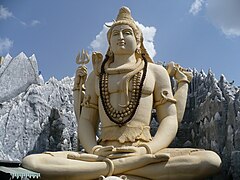
Lord Shiva
| |
| Observed by | Hindus in general, Shaivites in particular, Mandi Shivaratri Fair |
| Type | Hindu |
| Significance | Auspicious day to worship the Lord Shiva and his wife Parvati, celebrating their divine marriage |
| Observances | Fasting, worship of Lingam |
| Date | February/March |
| 2015 date | 17 February [1] |
| 2016 date | 7 March [2] |
| Frequency | Annual |
Maha Shivaratri is a Hindu festival celebrated annually in reverence of the god Shiva. It is the day Shiva was married to the goddess Parvati. The Maha Shivaratri festival, also popularly known as 'Shivaratri' (spelt asSivaratri, Shivaratri, Sivarathri, and Shivarathri) or 'Great Night of Shiva', marks the convergence of Shiva and Shakti. Maha Shivaratri is celebrated on the Krishna Paksha Chaturdashi of Hindu calendar month Maagha as per Amavasya-ant month calculation. As per Poornima-ant month calculation, the day is Krishna Paksha Chaturdashi of Hindu calendar monthPhalguna which falls in February or March as per the Gregorian calendar. Of the twelve Shivaratris in the year, the Maha Shivarathri is the most holy.[3]
The festival is principally celebrated by offerings of Bael leaves to Shiva, all-day fasting and an all-night-vigil (jagaran). All through the day, devotees chant "Om Namah Shivaya", the sacred mantra of Shiva. Penances are performed in order to gain boons in the practice of Yoga and meditation, in order to reach life's highest good steadily and swiftly. On this day, the planetary positions in the Northern hemisphere act as potent catalysts to help a person raise his or her spiritual energy more easily. The benefits of powerful ancient Sanskrit mantras such as Maha Mrityunjaya Mantraincrease greatly on this night.[4]
In Nepal, millions of Hindus attend Shivaratri together from different part of the world at the famous Pashupatinath Temple. Thousands of devotees also attend Mahasivaratri at the famous Shiva Shakti Peetham of Nepal.
In Trinidad and Tobago, thousands of Hindus spend the auspicious night in over 400 temples across the country, offering special jhalls to Lord Shiva.[5]
On Maha Shivaratri, Nishita Kala is the ideal time to observe Shiva Pooja. Nishita Kala celebrates when Lord Shiva appeared on the Earth in the form of Linga. On this day, in all Shiva temples, the most auspicious Lingodbhava Puja is performed.
Contents
[hide]- 1 Legends
- 2 Pralaya (the Deluge)
- 3 Lord Shiva's favourite day
- 4 The Story of King Chitrabhanu
- 5 Rituals of Maha Shivaratri
- 6 Shivaratri in India
- 6.1 International MahaShivaratri Fair
- 6.2 Maha Shivaratri in Vaiṣṇavism
- 6.3 Maha Shivaratri celebration in Bangladesh
- 6.4 Mahashivaratri in Central India
- 6.5 Mahashivaratri in Southern India
- 6.6 Sahasrakalasabishekam
- 6.7 Sivarathri Nrutham
- 6.8 Mahasivarathri Procession
- 6.9 Panchaakshari
- 6.10 Rudrabhisheka
- 6.11 Mysticism
- 7 See also
- 8 References
- 9 External links
Legends[edit]
Maha Shivaratri is associated with the marriage of Shiva and Shakti.
The legends signify that this day is the favorite of Lord Shiva and also throws light on his greatness and the supremacy of Lord Shiva over all other Hindu Gods and Goddesses.
Maha Shivaratri also celebrates the night when Lord Shiva performed the 'Tandava', the cosmic dance.
According to another legend of Samudra manthan, Shiva saved the world from the disastrous effects of a poison that emerged as a by product of the churning of the sea (Samudra manthan), by consuming the whole of the poison. Shiva could arrest the poison in his throat by his Yogic powers and it didn't go down his throat. His neck turned blue due to the effect of the poison on his throat and henceforth he is also known as Neela Kantha or The Blue Throated.
Pralaya (the Deluge)[edit]
Anot
Lord Shiva's favourite day[edit]
After earth's creation was complete, Parvati asked Lord Shiva which devotees and rituals pleased him the most. The Lord replied that the 14th night of the new moon, in the dark fortnight during the month of Phalgun, is his favorite day. Parvati repeated these words to Her friends, from whom the word spread to all creation.
The Story of King Chitrabhanu[edit]
Once upon a time King Chitrabhanu of the Ikshvaku dynasty, who ruled over the whole of Jambudvipa (India), was observing a fast with his wife, it being the day of Maha Shivaratri. The sage Ashtavakra came on a visit to the court of the king.
The sage asked the king the purpose of his observing the fast. King Chitrabhanu explained that he had a gift of remembering the incidents of his past birth, and in his previous life he had been a hunter in Varanasi and his name was Suswara. His only livelihood was to kill and sell birds and animals. The day before the new moon, while roaming through forests in search of animals, he saw a deer, but before his arrow flew he noticed the deer's family and their sadness at its impending death. So he let it live. He had still not caught anything when night fell, so he climbed a tree for shelter. It happened to be a Bael tree. His canteen leaked water, so he was both hungry and thirsty. These two torments kept him awake throughout the night, thinking of his poor wife and children who were starving and anxiously awaiting his return. To pass the time, he engaged himself in plucking the Bael leaves and dropping them down onto the ground.
The next day he returned home and bought some food for himself and his family. The moment he was about to break his fast a stranger came to him, begging for food. He served the food first to stranger and only ate afterward.
At the time of his death, he saw two messengers of Lord Shiva, sent to conduct his soul to the abode of Shiva. He learnt then for the first time of the great merit he had earned by unconscious worship of Shiva during the night of Maha Shivaratri. The messengers told him that there had been a Lingam (a symbol for the worship of Shiva) at the bottom of the tree. The leaves he dropped from the Bael tree had fallen into the shape of a Lingam, in imitation of Shiva's ritual worship. The water from his leaky canteen had washed the Lingam (also a ritual action), and he had fasted all day and all night. Thus, he unconsciously had worshiped Lord Shiva. At the conclusion of the tale the King said that he had lived in the abode of the Shiva and enjoyed divine bliss for a long time before being reborn as Chitrabhanu. This story is narrated in the Garuda Purana.[6]
'Shivaratri' means 'night of Shiva'. The important components of this religious festival are rigid fasting for twenty four hours and sleepless vigil during the night. Every true devotee of Lord Shiva spends the night of Shivaratri in deep meditation, keeping vigil and observing the fast.
The worship of Lord Shiva consists in offering flowers, Bilva leaves and other gifts on the Lingam, which is a symbol of Lord Shiva, and bathing it with milk, curd, ghee, honey, sugar, coconut water, butter, and rose-water.
When creation had been completed, Shiva and Parvati had been living on the top of Kailas. Parvati asked: “O venerable God, which of the many rituals observed in They honour doth please Thee most?” Lord Shiva replied: “The thirteenth night of the new moon, Krishna Paksha, in the month of Magha(February–March) is known as Maha Shivaratri, My most favourable Tithi. My devotees give Me greater happiness by mere fasting than by ceremonial baths, and offerings of flowers, sweets, and incense.
"Just hear, My Beloved, of an episode which will give you an idea of the glory and power of this ritual," said Lord Shiva to Parvati.
“Once upon a time, there lived in the town of Varanasi a hunter. He was returning from the forest one evening with the game birds he had killed. He felt tired and sat at the foot of a tree to take some rest. He was soon overpowered by sleep. When he awoke, it was the thick darkness of night. It was the night of Maha Shivaratri but he didn't know it. He climbed up the tree, tied his bundle of dead birds to a branch and sat up waiting for the dawn. The tree happened to be My favorite, the Bilva tree.
“There was a Lingam under that tree. He had plucked a few leaves and then dropped them down, accidentally forming the shape of a Lingam. The night-dew trickled down from his body. I was highly pleased with involuntary little gifts of the hunter. The day dawned and the hunter returned home.
“In time, the hunter fell ill and gave up his last breath. The messengers of Yama(Lord of Death) arrived at his bedside to carry his soul to Yamlok(abode of Yama). My messengers also went to the spot to take him to My abode. There was a vicious fight between Yama’s messengers and My messengers. The former were easily defeated. They reported the matter to Yama, Lord of Death. He arrived in person at the portals of My abode. Nandi gave him an idea of the sanctity of Maha Shivaratri and the love which I had for that hunter. Yama surrendered the hunter to Me and returned to his abode. Thereafter, Yama has pledged not to touch my devotees without my consent.
“The hunter was able to enter My abode and ward off death by simple fasting and the offering of a few Bilva leaves, even accidentally, because it was the night of Maha Shivaratri. Such is the solemnity and sacredness associated with that night.”
Parvati was deeply impressed by the speech of Lord Shiva on the sanctity and glory of Maha Shivaratri. She repeated it to Her friends, who in their turn passed it on to the ruling princes on earth. Thus, the sanctity of Maha Shivaratri was broadcast all over the world.
Rituals of Maha Shivaratri[edit]
Very early morning, Shiva temples are flocked by devotees, young and old, who come to perform the traditional Shivalinga worship (puja) and hence hope for favours from the God. Devotees bathe at sunrise, preferably in the Ganga, or any other holy water source (like the Shiv Sagartank at Khajurao). This is a rite of purification, which is an important part of all Hindu festivals. Wearing clean clothing after the holy bath, worshippers carry pots of water to the temple to bathe the Shivalinga. Women and men both offer prayers to the sun, Vishnu and Shiva. The temple reverberates with the sound of bells and shouts of “Shankerji ki Jai” meaning 'Hail Shiva'. Devotees circulate the lingam three or seven times, and then pour water over it. Some also pour milk over it.
According to the Shiva Purana, the Mahashivaratri worship must incorporate six items:
- Bathing the Shiva Linga with water, milk and honey. Woodapple or bel leaves are added to, which represents purification of the soul;
- Vermilion paste is applied to the Shiva Linga after bathing it. This represents virtue;
- Offering of fruits, which is conducive to longevity and gratification of desires;
- Burning incense, yielding wealth;
- The lighting of the lamp which is conducive to the attainment of knowledge;
- And betel leaves marking satisfaction with worldly pleasures.
Tripundra refers to the three horizontal stripes of holy ash applied to the forehead by worshipers of Lord Shiva. These stripes symbolise spiritual knowledge, purity and penance (spiritual practice of Yoga). They also represent the three eyes of Lord Shiva.[7]
Wearing a mala (rosary) made from the rudraksha seeds of the rudraksha tree (said to have sprung from the tears of Lord Shiva) when worshiping Lord Shiva is ideal. A rudraksha seed is mahogany-like color, or could sometimes be black. They might also have traces of sacred sandalwood powder, turmeric, kumkum, or holy ash if the rosary is used in worship ceremonies or annointations.
Other traditional worship of Lord Shiva[edit]
Main article: Jyotirlinga
The twelve Jyotirlingas (lingams of light) are sacred shrines to Lord Shiva, and centres for his worship. They are known asSwayambhus, meaning the lingams sprung up by themselves at these locations, and temples were built there afterwards.
Temples are listed in the India tourist guides.
Shivaratri in India[edit]
International MahaShivaratri Fair[edit]
Main article: Mandi Shivaratri Fair
The Mandi festival or fair is particularly famous as this special fair transforms the town of Mandi into a venue of grand celebration, where all Gods and Goddesses of the Mandi district, said to number more than 200, assemble, starting on the day of Shivaratri. The town of Mandi, located on the banks of the Beas River, is popularly known as the "Cathedral of Temples" and is one of the oldest towns of Himachal Pradesh, with about 81 temples of different Gods and Goddesses in its periphery. There are several legends linked to the celebration of Shivaratri. The festival is centered around the protector deity of Mandi "Mado Rai" (Lord Vishnu) and Lord Shiva of the Bhootnath temple in Mandi.[8][9][10] This festival is celebrated with great fervor in Mandi and it is common to see many foreign tourists throng to this region, especially to partake in the Maha Shivaratri celebrations in Mandi, Himachal Pradesh.
Maha Shivaratri in Vaiṣṇavism[edit]
Great Vaiṣṇava ācāryas recommend the observance of Śiva-ratri. The following is an excerpt from Śiva-tattva published by Gaudiya Vedanta Publications:
- We honor Lord Śiva as a great Vaiṣṇava and as guru. We do not worship him separately. We observe Śiva-ratri, Lord Śiva’s appearance day, and we glorify him in connection to his relationship with Śrī Kṛṣṇa. Śrīla Sanātana Gosvāmī has written in his Hari-bhakti-vilāsa that all Vaiṣṇavas should observe Śiva-caturdaśī (Śiva-ratri). Lord Śiva, in whom all good qualities reside, should certainly be honored by the observance of this day.
- We offer obeisance to Lord Śiva with prayers like this:
-
-
- vṛndāvanāvani-pate! jaya soma soma-maule
- sanaka-sanandana-sanātana-nāradeḍya
- gopīśvara! vraja-vilāsi-yugāṅghri-padme
- prema prayaccha nirupādhi namo namas te
-
-
-
-
-
-
-
-
- Saṅkalpa-kalpadruma, 103
-
-
-
-
-
-
-
-
-
- “O Gatekeeper of Vṛndāvana! O Soma, all glories to you! O you whose forehead is decorated with the moon, and who is worshipable by the sages headed by Sanaka, Sanandana, Sanātana and Nārada! O Gopīśvara! Desiring that you bestow upon me prema for the lotus feet of Śrī Śrī Rādhā-Mādhava, who perform joyous pastimes in Vraja-dhāma, I offer obeisances unto you time and again.”[11]
Maha Shivaratri celebration in Bangladesh[edit]
Hindus in Bangladesh also celebrate Maha Shivaratri. They fast in hopes of getting the divine blessing of Lord Shiva. Many Bangladeshi Hindus go to Chandranath Dham (Chittangong) to observe this special day. It is said by Bangladeshi Hindus that those who fast and perform the Puja will receive a good Husband/Wife, making Maha Shivaratri extremely popular with Hindus all over Bangladesh.
Mahashivaratri in Central India[edit]
Central India has a large number of Shiva followers. The Mahakaleshwar Temple, Ujjain is one of the most venerated shrines consecrated to Lord Shiva where a large congregation of Shiva devotees turns up every year to offer prayers on the day of Maha Shivaratri. Tilwara Ghat in the city of Jabalpur and the Math Temple in the village of Jeonara, Seoni are two other places where the festival is celebrated with much religious fervour.
Mahashivaratri in Southern India[edit]
Maha Shivaratri is celebrated widely in the temples all over Andhra Pradesh, Karnataka, Kerala and Tamil Nadu. Shiva is considered the Adi (first) Guru from whom the yogic tradition originates. According to tradition, the planetary positions on this night are such that there is a powerful natural upsurge of energy in the human system. It is said to be beneficial for one's physical and spiritual well-being to stay awake and aware throughout the night. On this day, artists from various fields such as classical music and dance perform the whole night.
Sahasrakalasabishekam[edit]
This is a very special and rare puja conducted during the 10 days of the Maha Sivarathri festival. It is well known that Lord Siva is abhishekapriya (lover of ablutions). Lord Parasurama and Kroshta Muni, during their worship of the Lord here, are believed to have bathed the deity with Sahasrakalasam or a thousand pots of holy water, according to Vedic rites. Now during Maha Shivarathri festival, the Head Priest (Thanthri) and his team perform this puja. It is a ten-day function, each day an offering of 101 Kalasam or pots of holy water (100 being made of silver, while one is made of gold), charged with mantras recited by learned Brahmins seated on the Mukhamantapam. The pots are emptied onto Lord Shiva's statue, the golden pot Brahmakalasam being the last one. A magnificent light is the indication or identity of Lord Shiva and the Shiva Lingam is considered to be the symbol of it. Hence, the formal worship on Maha Shivaratri consists of bathing the Shiva Lingam. Lord Shiva is said to be burning with the fire of austerity and so only those items are offered to Him that have a cooling effect. A cool water bath is believed propitious and to satisfy Shiva best. There is a belief among devotees that participation in Sahasrakalasam and offering holy worship will lead to blessings from Lord Shiva for prosperity and a peaceful life. Hundreds of devotees throng the shrine, chanting "Namah Shivaya", "Hara hara Mahadeva", and "Sambho Mahadeva"...
Sivarathri Nrutham[edit]
Sivarathri Nrutham at Thrikkuratti temple, according to religious scholars, resembles the cosmic dance of Shiva, called ‘Anandatandava,' meaning, 'the Dance of Bliss' symbolising the cosmic cycles of creation and destruction, as well as the daily rhythm of birth and death. The dance is a pictorial allegory of the five principle manifestations of eternal energy – creation, destruction, preservation, salvation, and illusion.
The Priest keeps sheeveli vigraha (idol) fixed on decorated frame on his head. He makes seven rounds on Pradakshina Vazhi (holy walkway made of granite around Sanctum Santorum). When the fifth round is reached at the west nada (Parvathi nada), the door opens for just 10 minutes. This is an annual ceremony. Thousands of Pilgrims rush to have a glance of this auspicious moment. At this time all the pradakshina vazhi will be lit with camphor and brass temple lamps by thousands of devotes who stay awake through the night while chanting "Nama Sivaya", "Hara Hara Mahadeva" and "Sambho Mahadeva". Older devotees sing "Hara sankara siva sankara duritham kala sivane". In this enlightened serene mood, the Priest performs Nrutham and runs the pradakshina vazhi towards the east nada. During the next two rounds he accepts "Valiya kanikka". The Sivarathri Nrutham is followed by the well known magnificent display of fireworks.
Mahasivarathri Procession[edit]
On the evening of the Maha Shivarathri festival, a grand procession starts from Kadapra Kainikkara Temple. It includes: several decorated floats, Kaavadi Aaatam, Mayilattom, Amman Kudom, Thaiyyam, Vela Kali, Kuthiyotta Chuvadu, richly caparisoned elephants and folk art forms. This procession attracts thousands of devotees and tourists. When the main procession reaches Market Junction, other mini processions from Kurattikkadu Mutharamman Temple, Kurattissery Kannamkavil Mutharamman Temple, Thrippavoor Mahavishnu Temple, Vishavarsherikkara Subrahmanya Swami Temple, Sreekaryam Maliekal Rajan Temple, and Alumoodu Sivaparvathy Temple join and make the procession even more magnificent. The marvelous as well as magical effect of the Sinakari Melam and Panchavadyam, a combination of five percussion and wind instruments, is heard and enjoyed. Among the varieties of festivals celebrated in Kerala, the Thrikkuratti Sivarathri procession is one of the most thunderous, spectacular and dazzling. It is an expression of popular fascination for sound and colour, and because of the pageantry, it appeals to all people, including foreigners. Once the procession reaches the temple, Deeparadhana is followed by a colourful display of fireworks.
Panchaakshari[edit]
Shiva, as the God of destroying evil, is the third among the divine trinity of Hindu mythology. Shiva's holy mantra, consisting of the five-syllables: "Na" "Ma" "Shi" "Vaa" "Ya" (Om NamaH Shivaaya) which praise Lord Shiva, is chanted incessantly on special occasions like Maha Shivaratri. Shiva's thousands of names, each describing His greatness, may also be chanted. Shiva means "auspicious". As Shankara, He is the giver of happiness to all. Nataraja (the king of dancers) is a favourite form of Lord Shiva's, revered especially by dancers and musicians.
Rudrabhisheka[edit]
There is a special set of mantras in the Vedas, "Rudra Sukta (Rudri)", which is recited by Bramhan/pundits (priests) while they offer a holy bath to the Shiva-lingam, with the waters of sacred rivers like the Ganges, as well as cow milk, curd (yogurt), ghee, honey and sugar powder. This ritual, known as "Rudrabhisheka", is an important part of Shiva-puja.
Mysticism[edit]
According to the mystic mythology of the Puraanaas, the Kailasa peak of the Himalayas is the abode of Shiva and He bears the Ganges on His head. As the Lord of creatures, He is metaphorically called the Pashupathi (with Nandi, the bull, His favourite animal) and His fearless nature is captured by the title of Sarpabhushana. Shiva's posture in the meditation is ascribed to Him as the head of Yogis (Yogiraja), who practice various spiritual feats to attain salvation. Lord Shiva's divine consort, Goddess Parvati (who is also the daughter of Himalaya), is the deity of strength. Shivaratri in Kashmir(herath) It is the most important festival for Kashmiri Brahmins . It's is celebrated in every household as the marriage of Shiva and Parvati. The festivities start 3–4 days before Maha Shivaratri and continue for two days after it (Salam).
It is the very Big Festival in india
See also[edit]
References[edit]
- ^ "February 2015 Calendar with Holidays". Retrieved20 November 2014.
- ^ "Maha Shivarathri 2016".
- ^ ShivShankar.in. "Maha Shivaratri". Maha Shivaratri. ShivShankar.in.
- ^ ShivShankar.in. "Maha Shivaratri". Maha Shivaratri.
- ^ "Grand Shivaratri Carnival celebrated in Trinidad and Tobago". IANS. news.biharprabha.com. Retrieved1 March 2014.
- ^ Garuḍa Purāṇa 1.124
- ^ "Mahashivratri Performing worship and science behind". hindujagruti.org. Retrieved 18 February 2013.
- ^ "International Shivaratri fair in Mandi". Himachal tourism. Retrieved 8 February 2012.
- ^ "The International Festival". Retrieved 2010-02-07.
- ^ "Mandi -The Seventh Heaven". Retrieved 2010-02-07.
External links[edit]
| Wikimedia Commons has media related to Shivaratri. |
- Maha Sivaratri Special Rituals
- Shivaratri by Swami Sivananda (Divine Life Society)
- Maha Shivaratri by Shiv R. Jhawar (Noble World Foundation)
- Maha Shivaratri Story
- Significance of Maha Shivaratri-Find all info about Maha Shivaratri at Kashi Vishwanath Temple in Varanasi
- Maha Shivaratri
| |||
| |||
Send Raksha Bandhan, Janmashtami, Onam eCards and Ganesh Chaturthi eCards From Hindu Festivals
January 2013
March 2013
Popular cards
August 2013
September 2013
October 2013
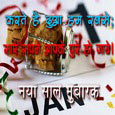
Naye Saal Ki Shubhkamna
Holi Wishes In Hindi...
Holi Ki Shubhkamnaye!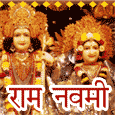
Ram Navami wishes in hindi.
Raksha Bandhan wishes in hindi.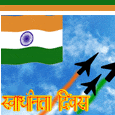
Swadhinta Diwas Ki Hardik...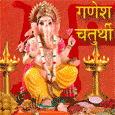
Wishes For A Blessed Ganesh...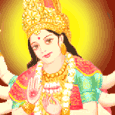
Jai Mata Di...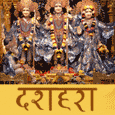
Dussehra Ki Hardik Shubhkamna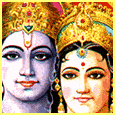
Adharm Par Vijay Payen...
God's Blessings!
Mangalam Bhagawaan...
Khamosh Rat Ke Pahlu Me.
Ek Ada Unki.
Related Searches
Web Results
Details about shivratri, mahashivratri, shivratari 2015, shivratri festival india, shivratri 2015, mahashivaratri 2015, mahashivaratri in india, shivaratri ...
Wish Happy Maha Shivratri 2015 with these quotes, sayings, messages and wishes both in English and Hindi languages.
Prime Minister Narendra Modi on Tuesday extended his greetings to the nation on the occasion of Maha Shivratri.
NEW DELHI: Prime Minister Narendra Modi today greeted the people on the occasion of Maha Shivratri. "Greetings onMaha Shivratri," he tweeted. Devotees ...
New Delhi: Delhi Chief Minister Arvind Kejriwal Tuesday wished people on the occasion of Maha Shivratri. "Good wishes to all of you on Maha Shivratri," Kejriwal tweeted.
Maha Shivratri is a Hindu festival celebrated annually in reverence of the god Shiva. It is the day Shiva was married to the goddess Parvati. The Maha Shivratri ...
Maha Shivaratri 2015 Shivaratri is great festival of convergence of Shiva and Shakti. Chaturdashi Tithi during Krishna Paksha in month of Magha is known as Maha ...
Maha Shivratri, the night of the worship of Lord Shiva, occurs on the 14th night of the new moon during the dark half of the month of Phalguna.
CHENNAI: Auspicious Hindu festival of Maha Shivratri is dedicated to worship Lord Shiva. Maha Shivratri is observed on the 13th night/14th day of the 11 ...
New Delhi, Feb 17: Prime Minister Narendra Modi on Tuesday extended his greetings to the nation on the occasion ofMaha Shivratri. "Greetings to all on the ...













No comments:
Post a Comment